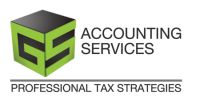Practice Areas
Tax
A resident of Canada is required to file an income tax return every year. Non-residents may have to file a tax return under certain circumstances. An individual files a T1 return; a corporation files a T2 return; a trust files a T3 return. A trust is not an entity in common law but treated as a taxable entity by the Income Tax Act. A legal representative of an estate of a deceased person may have to file a T3 return for the estate if it has properties that has not been distributed. Unlike US, a family can not file a joint return under the Canadian tax law. A partnership is not taxable entities for income tax purposes and its income is taxed in the hands of its partners.
An individual taxpayer can file their T1 return by paper, or using netfile. A software program, provided by commercial vendors and not the CRA, is required to netfile. Accountants and paid preparers usually use efile method, which requires registration with CRA and not available for individuals filing their own tax return.
Many benefits, such as Canada Child Tax Benefit (CCTB), are determined by the income reported on the T1 returns. If returns are not filed, benefits will be unavailable. Registered Retirement Savings Plan (RRSP) contribution room is also depends on the taxpayer’s reported income.
T1 returns are due April 30 for most taxpayers. If one has self-employed income, they could file the return by June 15, but the interest on their tax owing starts accruing after April 30.
A taxpayer could file the return themselves or get an accountant/paid preparer to file it for them. Every taxpayer is responsible for their tax liabilities, not the preparer. If a tax return is audited and a larger tax bill is the result, the taxpayer is responsible, not the preparer.
Employees normally have income tax withheld on each pay cheque by their employers, who remit the tax withheld together with payroll taxes to the CRA. Contractors (and most pensioners) are normally required to pay instalments for income tax to CRA during the year. Once a tax return is filed, a tax refund will be available if the tax withheld or the instalments are more than tax owing calculated on the tax return. If the tax return results in a balance due, it must be paid in full by the due date or interest will accrue daily.
Debt Restructuring
We offer debt restructuring for companies and individuals, who are currently in debt.
We help to restructure their debt to find a solution to their cash flow problem and grow their business.
These services are offered by our partners:
Payroll
Figuring out payroll deductions can be a daunting task. Rules change every year and you could be faced with that dreaded letter from the government telling you to top-up your remittances to them. However, if If you have recently started hiring people or if you want to learn more about how to do your payroll in Canada, these steps should help you get started.
Steps
1. Determine what pay frequency will be best for your company, such as weekly, biweekly (most frequently used), monthly, semi monthly etc.
2. Develop a timekeeping system to track employees’ hours, such as time sheets, time clocks, schedules etc
3. Determine method of calculating the employee’s’ wages and deductions, whether it be through purchasing software to perform calculations internally or hiring a payroll service provider.
4. Remit CPP, EI and Income Tax deductions as well as employer portions of CPP and EI to CRA based on your frequency discussed above.
5. T4 and T4A slips must be filed with CRA no later than the last day of February of the following calendar year to report employees’ income and deductions.
6. Payroll records and files must be kept for six years.
Bookkeeping
Bookkeeping is the recording of financial transactions, and is part of the process of accounting in business.[1] Transactions include purchases, sales, receipts and payments by an individual or organization. The accountant creates reports from the recorded financial transactions recorded by the bookkeeper and files forms with government agencies. There are some common methods of bookkeeping such as the single-entry bookkeeping system and the double-entry bookkeeping system. But while these systems may be seen as “real” bookkeeping, any process that involves the recording of financial transactions is a bookkeeping process.
Bookkeeping is usually performed by a bookkeeper. A bookkeeper , is a person who records the day-to-day financial transactions of an organization. A bookkeeper is usually responsible for writing the “daybooks”. The daybooks consist of purchases, sales, receipts, and payments. The bookkeeper is responsible for ensuring all transactions are recorded in the correct day book, suppliers ledger, customer ledger and general ledger.
The bookkeeper brings the books to the trial balance stage. An accountant may prepare the income statement and balance sheet using the trial balance and ledgers prepared by the bookkeeper.


